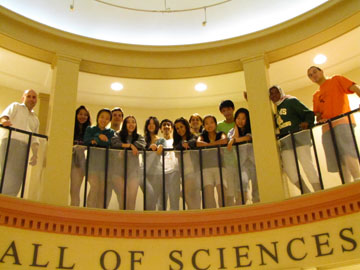THE EFFECTS OF MEDIAL AMYGDALA LESIONS ON FEAR AND ANXIETY
Rachel Bergman, Eileen Gongon, David Handsman, Saheela Ibraheem, Eileen Jiang, Nikhil Keny, Wendy Wei, Caresse Yan, Annie Yang, Sabrina Zeller, Allen Zheng, Linda Zhong
Advisor: Dr. Graham Cousens
Assistant: Zachary Vogel
|
ABSTRACT
The purpose of this study was to examine the underlying neural circuitries in fear and anxiety related pathways. Three experiments evaluated the effects of medial amygdala lesions on startle potentiation in rats. In Experiment One, olfactory fear-potentiated startle (oFPS) was used to model fear. In Experiment Two and Experiment Three, light-enhanced startle (LES) and allomone-potentiated startle (APS) were used to model anxiety, respectively. The amplitude of the acoustic startle response was used to evaluate the degree of either fear or anxiety in rats. Non-lesion rats and lesion rats were subjected to all three tests. A decreased startle response was observed in lesion rats subjected to both LES and APS while lesion rats exposed to oFPS demonstrated a limited change in startle response. These findings suggest that the medial amygdala plays a significant role in anxiety, but may not be involved in discrete fear response.
|


